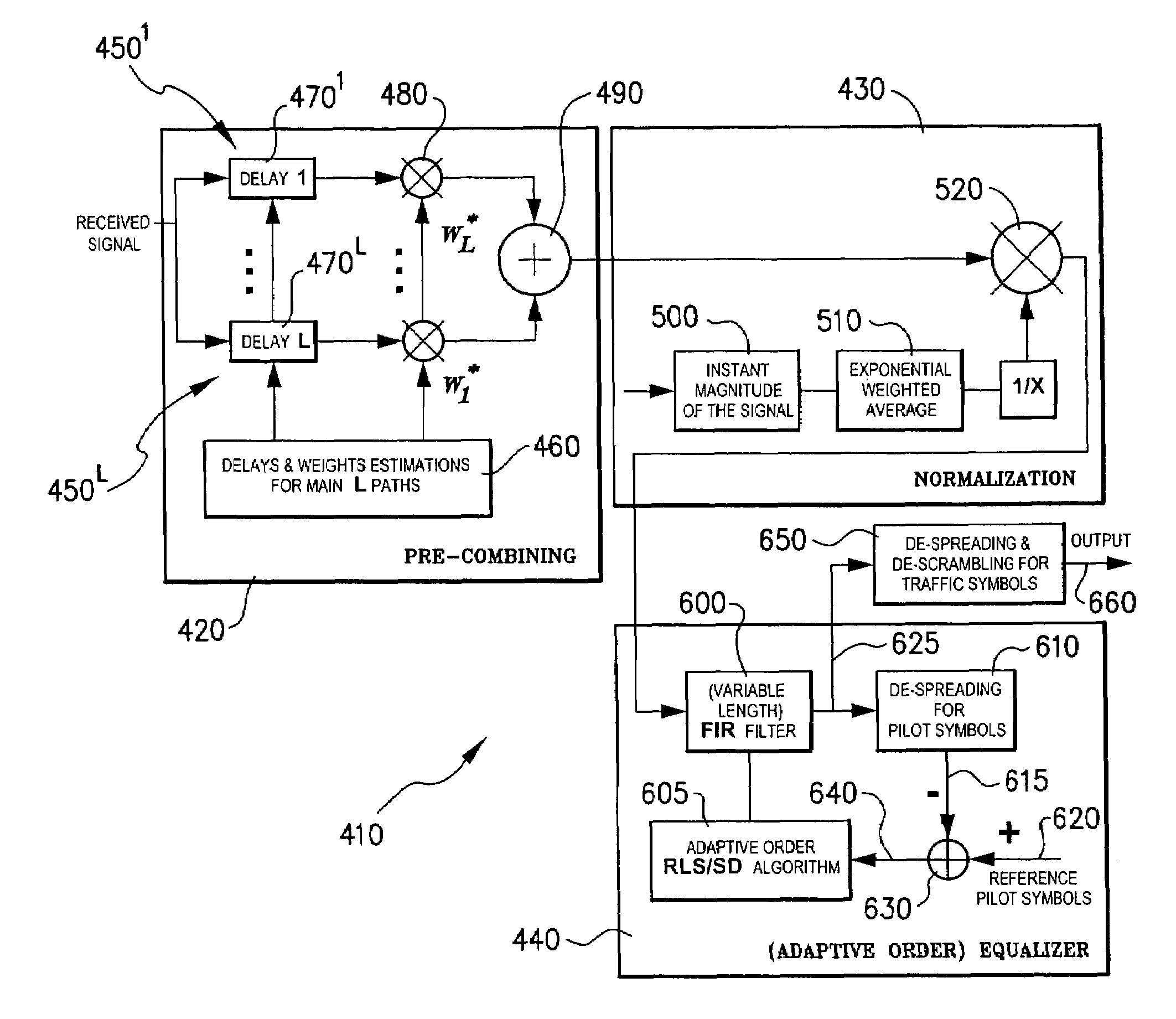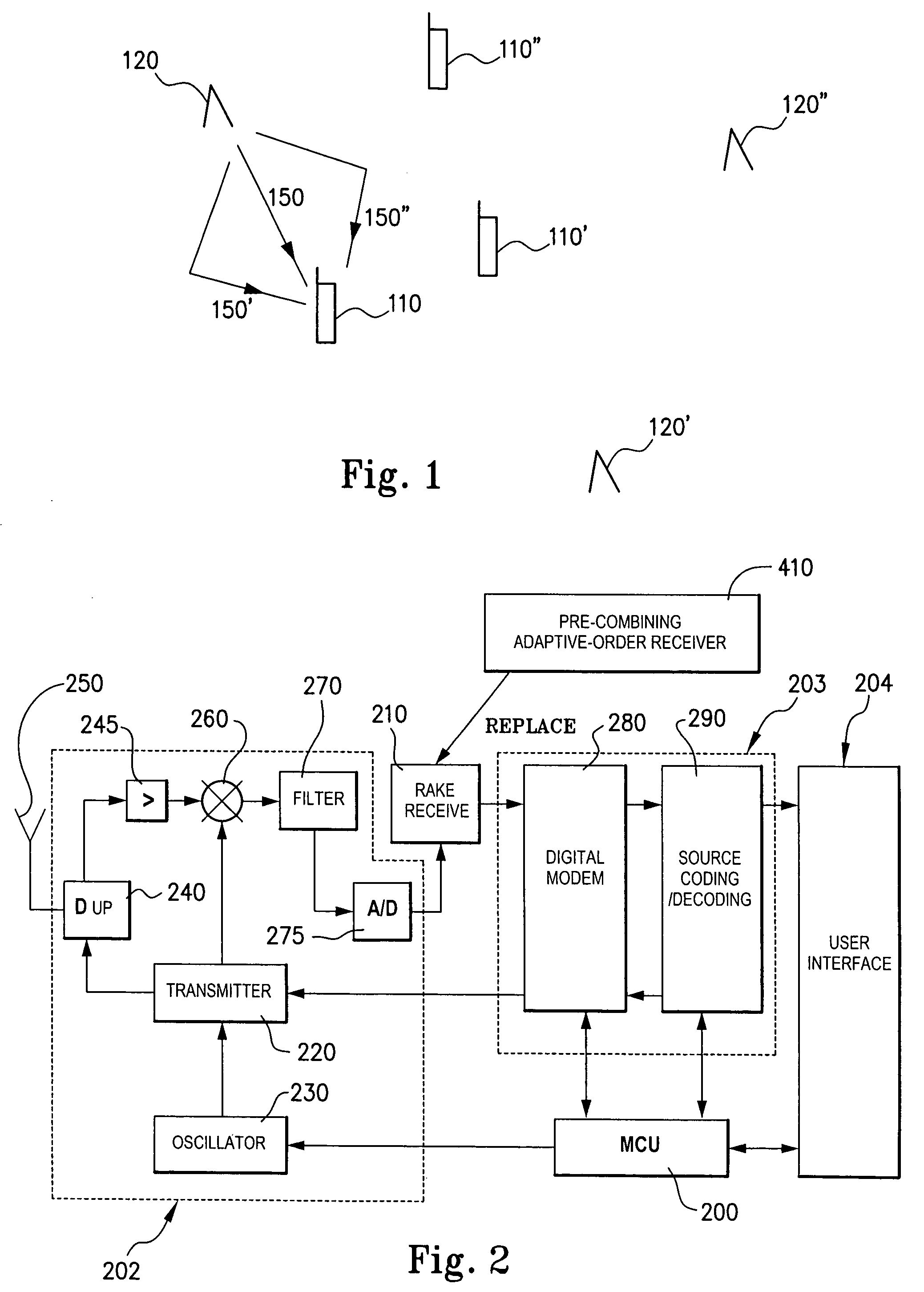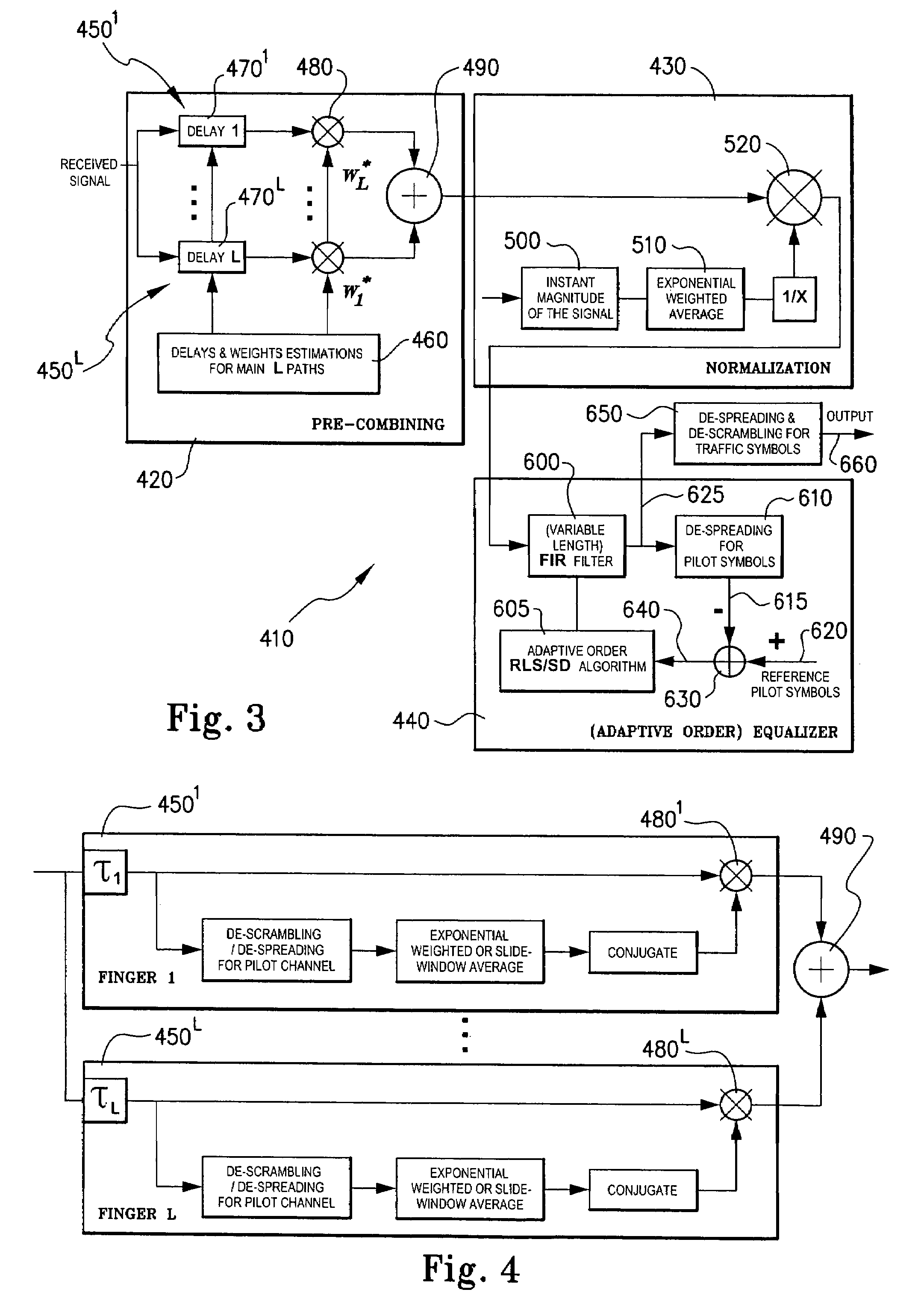Channel equalisation
a channel equalisation and channel equalisation technology, applied in the field of channel equalisation methods and apparatuses, can solve the problems of affecting the orthogonality of the signals received by the mobile users, and affecting the performance of the system, so as to reduce the interference of multiple accesses and demodulate the equaliser output
- Summary
- Abstract
- Description
- Claims
- Application Information
AI Technical Summary
Benefits of technology
Problems solved by technology
Method used
Image
Examples
Embodiment Construction
[0030]FIG. 1 is a schematic diagram of a cellular radio communications system 100 which uses a multiple access technology such as wideband CDMA (WCDMA) for communication between users of user terminals 110 (for example, mobile phones) and base stations 120. A plurality of base stations 120, 120′ and 120″ are provided for wireless communication with a greater plurality of mobile terminals, 110, 110′, 110″, etc. Signals from a mobile terminal 110 travel over free space on the uplink to base station 120. From the base station 120 the signals pass to a base station controller. The base station controller may be coupled to a mobile switching center (MSC), and MSC may be connected in turn to a fixed communications network such as the public switched telephone network (PSTN) to permit signals from the user terminal 110 to be passed to a subscriber of the fixed network and vice versa. The fixed communications network will also carry signals from the user terminal 110 to other users or subsc...
PUM
 Login to View More
Login to View More Abstract
Description
Claims
Application Information
 Login to View More
Login to View More - R&D
- Intellectual Property
- Life Sciences
- Materials
- Tech Scout
- Unparalleled Data Quality
- Higher Quality Content
- 60% Fewer Hallucinations
Browse by: Latest US Patents, China's latest patents, Technical Efficacy Thesaurus, Application Domain, Technology Topic, Popular Technical Reports.
© 2025 PatSnap. All rights reserved.Legal|Privacy policy|Modern Slavery Act Transparency Statement|Sitemap|About US| Contact US: help@patsnap.com



